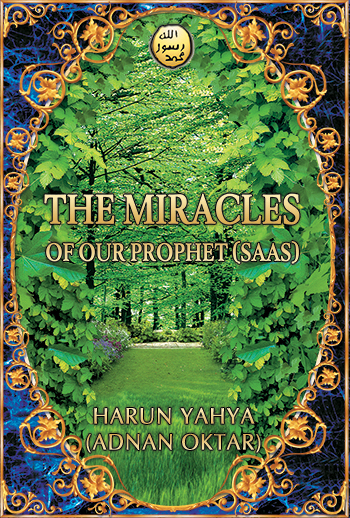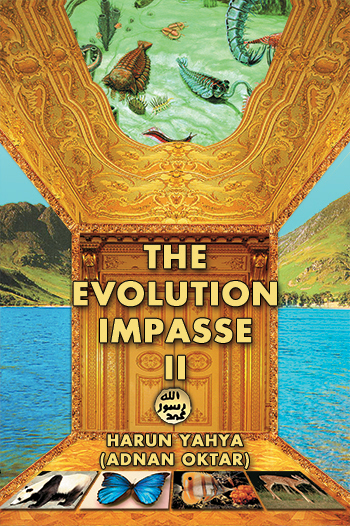Bigotry: The Dark Danger
Various contradictions in the four Gospels about the claim of the Prophet Jesus' (pbuh) so-called crucifixion
The Christian belief is based on the belief that the Prophet Jesus (pbuh) was crucified and killed on the cross and he will then be resurrected. However, as it is revealed in the Qur’an, the Prophet Jesus (pbuh) was not crucified, therefore not killed, and on the contrary he was raised to the sky while still alive and taken to the Sight of God to be sent back to earth again in the End Times. (You can read our explanations about the subject from here.) The reason for the Christian community to defend the belief that the Prophet Jesus (pbuh) was crucified is some chapters in the Gospel. However, the statements written in the chapters in question are, as we have stated before, contradictory statements, which were added to the Bible in the 3rd century after the Prophet Jesus (pbuh).
Some of these contradictory statements about out subject are as follows:
Contradictory statements in the Gospel about the Prophet Jesus’ (pbuh) so-called crucifixion
Who carried the cross?
There are statements that the cross was carried by Simon from Cyrene in Mark 15:21, Matthew 27:32 and Luke 23:26:
As they were going out, they met a man from Cyrene, named Simon, and they forced him to carry the cross. (Matthew 27:32)
In the Gospel of John, it is stated that the Prophet Jesus (pbuh) carries the cross:
Carrying his own cross, he went out to the place of the Skull (which in Aramaic is called Golgotha). (John 19:17)
The crucified robbers:
It is told in the sections of Mark 15:27-28, Matthew 27:44 and Luke 23:39-42 that Jesus was supposedly crucifed along with two robbers. The contradiction here is that the Romans never crucify robbers. 1
They crucified two robbers with him, one on his right and one on his left. (Mark 15:27-28)
In the same way the robbers who were crucified with him also heaped insults on him. (Matthew 27:44)
Contradictory information about the time of the Prophet Jesus’ (pbuh) crucifixion:
In the passages in Gospels of Matthew 27:45-36, Luke 23:44-46 and John 19:14-15, a time from twelve to three o’clock is indicated as the so-called time of the Prophet Jesus’ (pbuh) crucifixion, whereas in Mark 15:25 this time is told to be nine o’clock.
It was now about the sixth hour, and darkness came over the whole land until the ninth hour, for the sun stopped shining.And the curtain of the temple was torn in two. Jesus called out with a loud voice, "My Lord, into Your hands I commit my spirit." When he had said this, he breathed his last. (Luke 23:44-46)
It was the third hour when they crucified him.(Mark 15:25)
The so-called last word the Prophet Jesus (pbuh):
There is contradictory information in the four Bibles about the last words of the Prophet Jesus (pbuh) during his so-called crucifixion. In the passages of Mark 1 5:34-37 and Matthew 27:46:50, it is stated that the Prophet Jesus (pbuh) called out this:
And at the ninth hour Jesus cried out in a loud voice, "Eloi, Eloi, lama sabachthani?"—which means, "My God, my God, why have You forsaken me? [God is beyond that.]"(Mark 15:34)
In the Gospel of Luke, the so-called last words of the Prophet Jesus (pbuh) is stated differently:
Jesus called out with a loud voice, "God, into Your hands I commit my spirit." When he had said this, he breathed his last. (Luke 23:46)
In the Gospel of John, the statements about this subject are completely different:
When he had received the drink, Jesus said, "It is finished." With that, he bowed his head and gave up his spirit. (John 19:30)
The Prophet Jesus (pbuh) supposedly drinking wine or vinegar?
In the passages, which claim that the Prophet Jesus (pbuh) was supposedly crucified, it is mentioned that he was made to drink something before being cruicified, however while this drink is defined as wine in the Gospel of Mark, it is defined as vinegar in the Gospels of Matthew, Luke and John:
According to the Gospel of Mark, the Prophet Jesus (pbuh) is made to drink wine:
Then they offered him wine mixed with myrrh, but he did not take it. (Mark 15:23)
According to the Gospels of Matthew, Luke and John, the Prophet Jesus (pbuh) is made to drink vinegar:
Immediately one of them ran and got a sponge. He filled it with wine vinegar, put it on a stick, and offered it to Jesus to drink. (Matthew 27:48)
The soldiers also came up and mocked him. They offered him wine vinegar and said, "If you are the king of the Jews, save yourself." (Luke 23:36-37)
A jar of wine vinegar was there, so they soaked a sponge in it, put the sponge on a stalk of the hyssop plant, and lifted it to Jesus' lips.When he had received the drink, Jesus said, "It is finished." With that, he bowed his head and gave up his spirit. (John 19:29-30)
The earthquake during the so-called burial of the Prophet Jesus (pbuh):
This explanation is in the Gospel of Matthew:
At that moment the curtain of the temple was torn in two from top to bottom. The earth shook and the rocks split. The tombs broke open and the bodies of many holy people who had died were raised to life. They came out of the tombs, and after Jesus' resurrection they went into the holy city and appeared to many people. (Matthew 27:51-53)
In the Gospels of Mark, Luke and John, there are several definitions being made with respect to the so-called burial of the Prophet Jesus (pbuh), however an incident of an earthquake, which is impossible to forget given that it actually took place, is never mentioned.
Events that took place following the so-called burial of the Prophet Jesus (pbuh):
Events, which are claimed to take place following the so-called burial of the Prophet Jesus (pbuh) are explained differently in the four Gospels:
At that moment the curtain of the temple was torn in two from top to bottom. The earth shook and the rocks split.The tombs broke open and the bodies of many holy people who had died were raised to life. They came out of the tombs, and after Jesus' resurrection they went into the holy city and appeared to many people. (Matthew 27:51-53)
But when they looked up, they saw that the stone, which was very large, had been rolled away. As they entered the tomb, they saw a young man dressed in a white robe sitting on the right side, and they were alarmed. (Mark 16:4-5)
They found the stone rolled away from the tomb, but when they entered, they did not find the body of ...Jesus. While they were wondering about this, suddenly two men in clothes that gleamed like lightning stood beside them. (Luke 24:2-4)
So Peter and the other disciple started for the tomb. Both were running, but the other disciple outran Peter and reached the tomb first. He bent over and looked in at the strips of linen lying there but did not go in. Then Simon Peter, who was behind him, arrived and went into the tomb. He saw the strips of linen lying there, as well as the burial cloth that had been around Jesus' head. The cloth was folded up by itself, separate from the linen. (John 20:3-8)
The competent authorities, to which the Prophet Jesus (pbuh) was taken, being different:
In the Gospels of Mark 14:53, Matthew 26:57 and Luke 22:54, the competent authority, to which the Prophet Jesus (pbuh) was taken, was told to be Caiaphas, the high priest, in the Gospel of John this authority is told to be Annas, the father-in-law of Caiaphas.
They took Jesus to the high priest...(Mark 14:53)
Those who had arrested Jesus took him to Caiaphas, the high priest... (Matthew 26:57)
Then seizing him, they led him away and took him into the house of the high priest. Peter followed at a distance. (Luke 22:54)
and brought him first to Annas, who was the father-in-law of Caiaphas, the high priest that year. (John 18:13)
The Prophet Jesus (pbuh) standing trial with the so-called accusations:
In the four Gospels, all of the explanations about the so-called trial of the Prophet Jesus (pbuh) contradict with one another.
According to the Gospel of John, only the high priest is interrogating the Prophet Jesus (pbuh):
Then the detachment of soldiers with its commander and the Jewish officials arrested Jesus. They bound him and brought him first to Annas, who was the father-in-law of Caiaphas, the high priest that year. Caiaphas was the one who had advised the Jews that it would be good if one man died for the people... Meanwhile, the high priest questioned Jesus about his disciples and his teaching. (John 18:12-14,19)
According to the Gospels of Mark, Luke and Matthew, the Prophet Jesus (pbuh) stands trial by the whole of the High Council:
At daybreak the council of the elders of the people, both the chief priests and teachers of the law, met together, and Jesus was led before them."If you are the Christ," they said, "tell us." (Luke 22:66-67)
They took Jesus to the high priest, and all the chief priests, elders and teachers of the law came together... The chief priests and the whole Sanhedrin were looking for evidence against Jesus so that they could put him to death, but they did not find any. Many testified falsely against him, but their statements did not agree. (Mark 14:53-56)
Those who had arrested Jesus took him to Caiaphas, the high priest, where the teachers of the law and the elders had assembled. But Peter followed him at a distance, right up to the courtyard of the high priest. He entered and sat down with the guards to see the outcome. The chief priests and the whole Sanhedrin were looking for false evidence against Jesus so that they could put him to death. (Matthew 26:57-59)
The Prophet Jesus’ (pbuh) interrogation by Hirodes:
In the Gospel of Luke, it is mentioned that the Prophet Jesus (pbuh) was interrogated by Herod: On hearing this, Pilate asked if the man was a Galilean. 7When he learned that Jesus was under Herod's jurisdiction, he sent him to Herod, who was also in Jerusalem at that time. When Herod saw Jesus, he was greatly pleased, because for a long time he had been wanting to see him. From what he had heard about him, he hoped to see him perform some miracle. He plied him with many questions, but Jesus gave him no answer. The chief priests and the teachers of the law were standing there, vehemently accusing him. Then Herod and his soldiers ridiculed and mocked him. Dressing him in an elegant robe, they sent him back to Pilate. That day Herod and Pilate became friends—before this they had been enemies. (Luke, 23:6-12)
In the Gospels of Matthew, Mark and John, the interrogation of the Prophet Jesus (pbuh) by Herod is not mentioned.
The contradictions in question are open evidences that those accounts told about the so-called cruicifixion of the Prophet Jesus (pbuh) are based on completely false information and the explanations regarding that moment and environment contradict one another. Almighty God reveals in the Qur’an that there was no case of the Prophet Jesus (pbuh) being cruicified and killed, however the unbelievers experienced an environment in which they would presume this would happen in that way. Our Lord reveals in the Qur’an that these claims about the Prophet Jesus (pbuh) are invalid; the traps set by hypocrites and unbelievers against the Prophet Jesus (pbuh) came to nothing and the Prophet Jesus (pbuh) was taken up to the sky –God’s Sight. When the contradictions in the Gospel passages in question are analyzed in the light of the Qur’an, this serious confusion is immediately clarified: The explanations related the Prophet Jesus (pbuh) being killed on the cross, just like some other false statements, are misleading beliefs, which were included in the Gospel afterwards and with a specific purpose. You can read our explanations about the subject in our next article.
1 http://www.examiner.com/catholic-in-albuquerque/the-last-days-with-jesus-who-is-barabbas-part-2-
http://www.2think.org/hii/bible_cr.shtml
The Prophet Jesus (pbuh) did not die, he was raised to God’s Sight
2010-10-28 13:47:44







